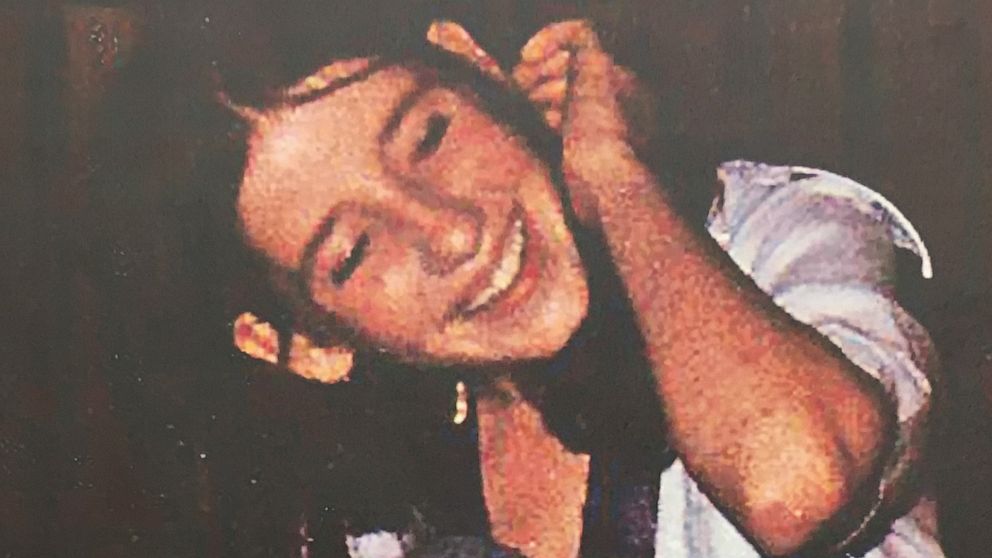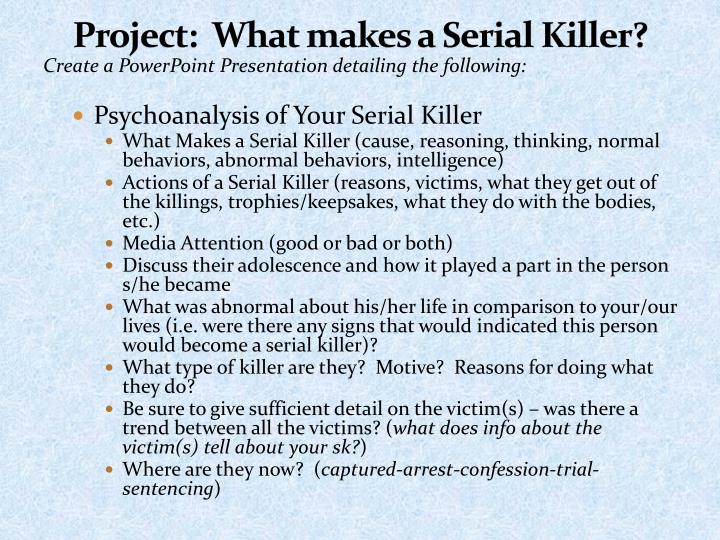
"There are more than 222,000 unsolved murders since 1980," he said.
What makes a serial killer a killer serial#
Thomas Hargrove, who has created the nation's largest database of killings, also puts the number of active serial killers at greater than 2,000. He notes that the police "solve rate" for murders dropped from 91 percent in 1965 to only 61.6 percent in 2017, partly because mass killers are more sophisticated. But Michael Arntfield, a retired police detective and author of a dozen books on serial killing, contends that the number of repeat killers active today is more likely between 3,000 and 4,000. The FBI says only 1 percent of murders today are committed by serial killers, and that it's harder for them to go undetected, because of DNA evidence, public cameras, stricter parole laws, and the use of databases. population (13 percent).ĭata suggest that American serial killing peaked in the 1980s and has declined since then. African-American victims are over-represented (24 percent) relative to their proportion of the U.S. Generally speaking, the majority of victims of serial killers are women (51.4 percent).

I stayed in the ghettos." Earlier this year, Bruce McArthur pleaded guilty to murdering eight men in Toronto's Gay Village - many of them immigrants from South Asia or the Middle East who were not "out" to their families. I killed you, it'd be all over the news the next day. As he told New York Times reporter Jillian Lauren, "I never killed no senators or governors or fancy New York journalists. Little, for one, managed to evade detection for so long by preying on prostitutes, drug addicts, and homeless women. Serial killers often prey on the most marginalized members of society. Jeffrey Dahmer, who killed, dismembered, and partially ate 17 boys and young men beginning in 1978, said he did so "not because I hated them, but to keep them with me." Gerald Stano, who killed at least 22 women beginning in the 1970s, compared killing people to "stepping on a cockroach." Little said he got sexual pleasure from strangling women with his bare hands, and that by taking their lives, he came to "own" them. Prolific arsonist Robert Dale Segee, who is believed to have killed 168 and injured hundreds more by setting a fire at a Connecticut circus in 1944, grew up with a dad who punished him by holding his fingers over a candle flame. Serial killers often are loners who fear all relationships and seek to control, to destroy other people to eliminate the possibility of another humiliating rejection. As a consequence of that trauma or separation, scientists believe, they learned to suppress empathy or suffered damage to the areas of the brain that control emotional impulses. (One gene, particularly, the so-called warrior gene, is present in about 30 percent of the population and has been linked to increased aggression.) Many serial killers also experienced childhood trauma or early separation from their mothers. Research shows that certain genes can predispose people to violence. Probably a combination of genetics and experience. history, after he confessed to 93 killings between 19. Samuel Little, a transient former boxer and career criminal serving time for two murders, was recently identified by the FBI as the most prolific serial killer in U.S. About 52 percent were white, 40 percent black, and 6.7 percent Hispanic.


Their favorite murder weapon was a gun (42 percent), although 6 percent preferred poison and 2 percent axes. About 32 percent of these killers, Aamodt says, did so for enjoyment (thrills, lust, and power) 30 percent for financial reward 18 percent in anger 6.3 percent to advance a criminal enterprise and fewer than 1 percent because a cult put them up to it. The FBI defines a serial killer as someone who kills two or more people in separate events.

Michael Aamodt, who oversees the Radford University/Florida Gulf Coast University Serial Killer Database. Since 1900, there have been 3,000 identified American serial killers who've collectively killed nearly 10,000 people, says Dr. Are serial killers to blame? Here's everything you need to know: There have been 220,000 unsolved murders in the U.S.


 0 kommentar(er)
0 kommentar(er)
